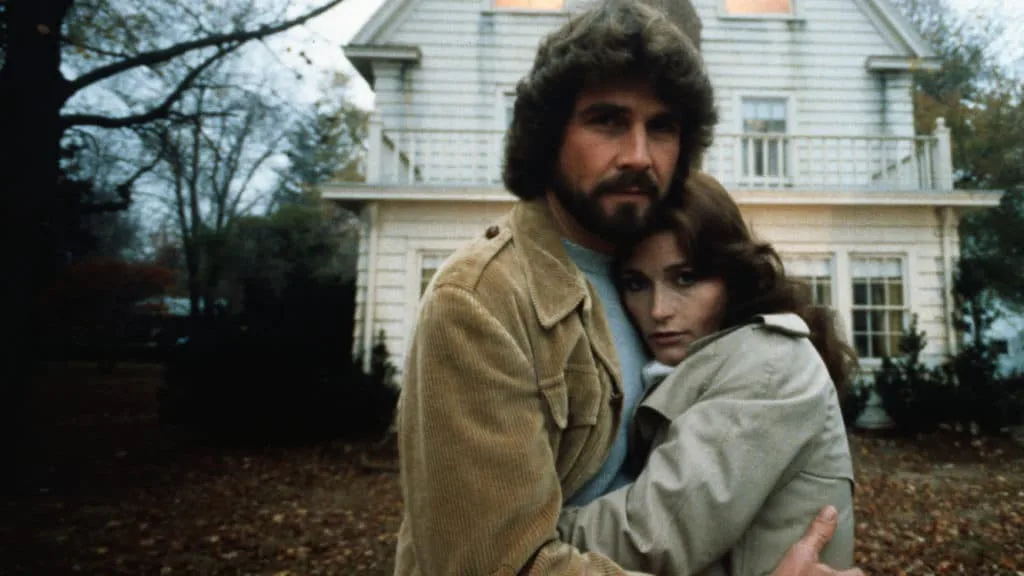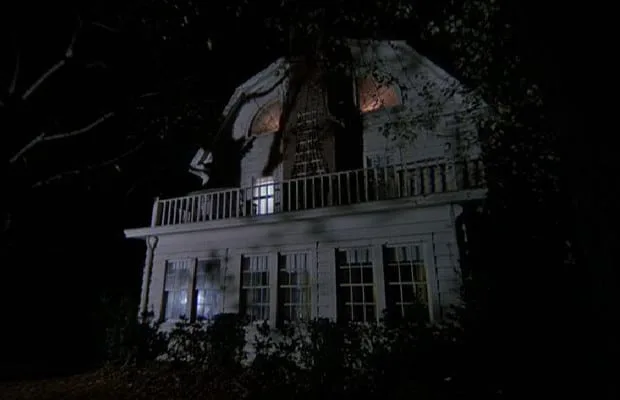
“GET OUT!”
The film begins with a multiple homicide at the property – an event which did occur at the address – before winding the clock forward by a year. The house is now on the market, and going at a steal; it’s an ideal proposition for the newly-married Kathy and George Lutz (Margot Kidder and James Brolin respectively). At very first, things are of course fine; however the priest (Rod Steiger) who wanders in to the property to give it a blessing, before becoming overwraught and spending most of the rest of the film incapacitated, is the one who seems to exacerbate things, if you ask me. From that point on, strange things begin to happen: daughter Amy begins to talk about an imaginary friend; the house is plagued with flies; George begins to maniacally chop wood (?) and disembodied voices are heard…
Whilst I’ve condensed down the strange phenomena into a list, that doesn’t mean a great deal, for the most part, is going on here. Truth be told, The Amityville Horror has many limitations and relies primarily on bad vibes (with the obligatory spook’s-eye-view camera shots replacing more ambitious goings-on) and the threat of worse, with limited pay-off. A great deal of time is afforded to George’s mysterious flu-like symptoms and shortening temper, which aren’t particularly diverting – or perhaps not handled so well, as the equivalent testimony from the real-life George Lutz is far scarier. There are a fair few vomiting clergy in the film as well, which means only that we are left to imagine unholy bad smells.
So, I think it’s fair to say that some elements seem rather contrived now. The personified house with the glowing red eyes, the obligatory kids’ choir over the opening credits, and the HUGE and OBVIOUS foreshadowing (3:15! You got that? 3:15! 3:15!) has been done to death ever since. I hadn’t seen this film since I was unreasonably young, and I must say, it hasn’t retained much of the impact it had on me then, as I remember being quite disturbed by it. That said, as I was watching my screener copy, a chunk of my ceiling fell down for no reason I could see, and I jumped out of my skin – so the film was clearly doing something right…
“Jody doesn’t like George…”

Should you wish to part with your cash for a new edition, I can only compliment the steelbox version recently released by Second Sight: it’s an attractive bit of kit, and comes with a set of four replication lobby cards. There are a wealth of extras on the disc, too, comprising cast & crew interviews as well as an interview with a member of the Lutz family (son Daniel) and the usual stack of trailers, TV spots and radio spots.
The Amityville Horror is available on remastered Blu-ray now.
